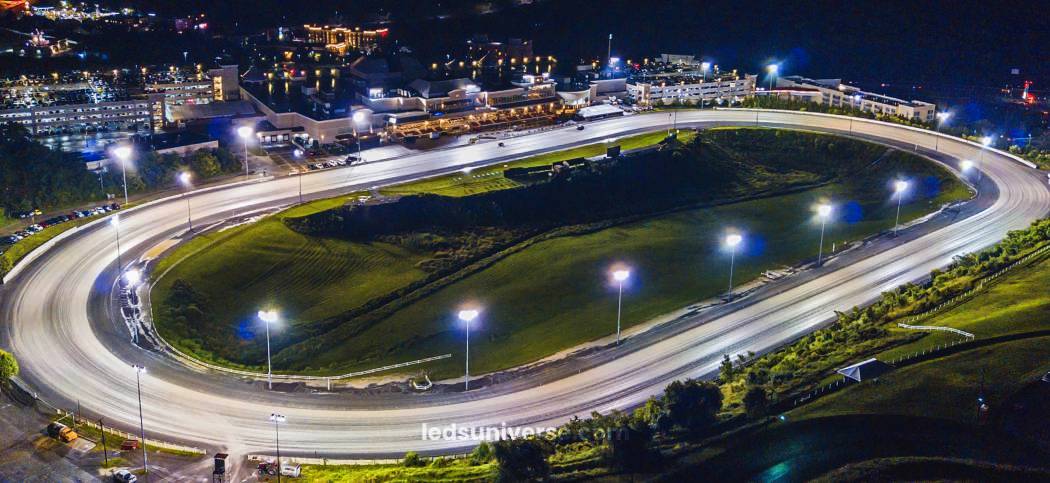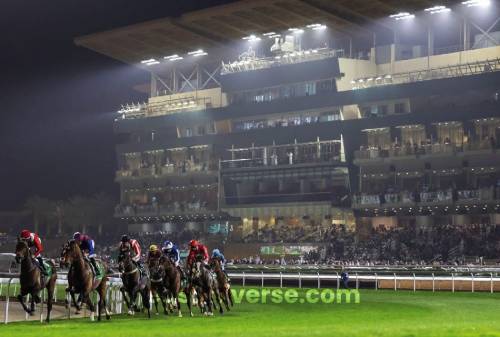As racecourses strive to enhance their venues and accommodate night events, the financial burden of upgrading lighting systems can be daunting. Fortunately, a variety of grants and financial incentives are available to support these essential improvements. By tapping into these funding opportunities, racecourses can illuminate their tracks, enhance spectator experiences, and create safer environments—all while ensuring their place as cherished community hubs.
The excitement of horse racing draws large crowds, creates local jobs, and supports various businesses. However, the illumination of these venues is equally important, as proper lighting ensures safety, enhances the experience for spectators, and allows for night-time events. Many racecourses seek funding to upgrade their lighting systems, and various grants and financial incentives can help.
Reach out for free lighting consultation
| Funding Source | Type of Grant | Purpose | Typical Funding Amount | Application Deadline |
|---|---|---|---|---|
| Federal Government | Energy Efficiency Grant | Support energy-efficient upgrades | Up to $500,000 | Varies by program |
| State Government | Infrastructure Grant | Enhance community infrastructure and safety | $100,000 – $1,000,000 | Annually |
| Nonprofit Organizations | Community Engagement Grant | Promote community involvement and access | $10,000 – $200,000 | Rolling applications |
| Private Sector | Corporate Sponsorship | Promote sustainability and community development | Varies | Ongoing |
Table of Contents
ToggleVarious grants and financial incentives are available to racecourses looking to improve their lighting systems. These grants can come from different sources, including government agencies, nonprofit organizations, and private sector initiatives. Understanding the landscape of available funding can help racecourses navigate the process effectively.

Government grants are often a primary source of funding for racecourses looking to upgrade their lighting. Various levels of government—federal, state, and local—offer grants designed to support infrastructure improvements, promote public safety, and enhance community engagement.
Many government grants focus on energy efficiency and sustainability. By upgrading to energy-efficient lighting systems, racecourses can reduce their operational costs while minimizing their environmental impact. Programs that incentivize renewable energy use often align with such upgrades, offering additional financial support.
Nonprofit organizations play a vital role in supporting local communities and promoting sporting events. Some nonprofits offer grants specifically tailored to sports facilities, including racecourses. These grants may be aimed at enhancing accessibility, safety, and overall spectator experience.
Moreover, nonprofits often emphasize community engagement and participation. Grants from these organizations may require racecourses to demonstrate their commitment to community involvement through outreach programs, educational initiatives, or partnerships with local schools and organizations.
In addition to government and nonprofit funding, private sector initiatives can also offer grants for racecourse lighting upgrades. Many companies are invested in promoting sustainability and enhancing community engagement. These businesses may provide financial support or equipment donations as part of their corporate social responsibility efforts.
Private sector grants may come from various industries, including energy, technology, and entertainment. Collaborating with these organizations can provide racecourses with access to resources and expertise that can streamline the upgrade process.
 Identifying potential funding sources is crucial for racecourses looking to secure grants for lighting upgrades. A variety of funding programs exist at the federal, state, and local levels, each with specific criteria and application processes.
Identifying potential funding sources is crucial for racecourses looking to secure grants for lighting upgrades. A variety of funding programs exist at the federal, state, and local levels, each with specific criteria and application processes.
Federal funding programs typically offer larger grants that can cover a significant portion of lighting upgrade costs. Programs administered by agencies like the Department of Energy (DOE) and the Environmental Protection Agency (EPA) often emphasize energy efficiency and sustainability.
For instance, the DOE’s Better Buildings Initiative encourages organizations to adopt energy-efficient technologies, including lighting systems. Racecourses can apply for grants through this program to fund their lighting upgrades, provided they meet certain eligibility criteria.
State governments often offer grants tailored to specific needs within their jurisdictions. Programs may focus on tourism, infrastructure development, or community engagement, all of which align with racecourse operations.
Many states have energy efficiency programs designed to support businesses and facilities in reducing their energy consumption. These programs can provide funding for lighting upgrades that meet specified energy efficiency standards.
Local governments may offer grants or financial assistance to community organizations, including racecourses. These programs often emphasize the role of racecourses in promoting local tourism, creating jobs, and supporting the economy.
By engaging with local government agencies, racecourses can identify available funding sources and ensure they meet eligibility requirements. Many local programs prioritize initiatives that enhance community engagement and improve the overall quality of life for residents.
Securing funding for racecourse lighting upgrades requires a systematic approach to the grant application process. Preparing a compelling application is essential to improve the chances of receiving funding.
The first step in the application process involves researching potential funding opportunities. Racecourses should compile a list of relevant grants from government agencies, nonprofit organizations, and private sector initiatives. Understanding the eligibility requirements, application deadlines, and funding amounts is crucial in this phase.
Once potential funding sources have been identified, the next step is to develop a comprehensive proposal. A well-crafted proposal should include information about the racecourse, the current lighting system, and the proposed upgrades. Including detailed plans, budget estimates, and timelines can strengthen the proposal’s impact.
Additionally, racecourses should highlight the anticipated benefits of the lighting upgrades. This may include improved safety, enhanced spectator experience, and potential cost savings from energy-efficient systems. Providing data and research to support these claims can further bolster the application.
Collaboration with various stakeholders can enhance the proposal’s strength. Engaging with local governments, community organizations, and industry experts can provide valuable insights and resources. Building partnerships can also demonstrate community support for the proposed upgrades, making the application more compelling.
After finalizing the proposal, racecourses must submit their applications according to the guidelines outlined by the funding source. Adhering to submission deadlines and ensuring all required documentation is included is critical for a successful application.
Following submission, racecourses may need to be prepared for follow-up communication or additional information requests from funding agencies. Maintaining open lines of communication can facilitate a smoother review process.
Examining successful case studies can provide valuable insights into best practices for securing grants for racecourse lighting upgrades. Analyzing past funding recipients can help identify common themes and strategies that have led to successful applications.
Oakridge Racecourse applied for a federal grant under the Better Buildings Initiative to upgrade its lighting system. The proposal outlined the current challenges with their outdated lighting, including safety concerns and high energy costs.
The racecourse collaborated with a local energy consultant to assess their lighting needs and develop a comprehensive plan. By providing data on energy savings and safety improvements, the proposal garnered significant support. Oakridge Racecourse received a grant covering 70% of the total upgrade costs, allowing them to implement energy-efficient LED lighting.
Green Valley Racetrack sought funding from a local nonprofit organization dedicated to promoting sports and community engagement. The racetrack’s proposal emphasized its role in supporting local tourism and creating jobs in the region.
By showcasing community involvement and providing detailed plans for educational outreach initiatives, the proposal resonated with the nonprofit’s mission. Green Valley Racetrack successfully secured a grant to enhance its lighting system, ultimately improving the overall spectator experience and safety.
River Bend Racing Facility identified a private sector initiative focused on sustainability and community development. The racetrack’s proposal highlighted the potential environmental benefits of upgrading to energy-efficient lighting and outlined a plan for engaging local schools in educational programs about sustainability.
By aligning the proposal with the private sector’s corporate social responsibility goals, River Bend Racing Facility received funding for a significant portion of their lighting upgrade. The collaboration fostered a lasting partnership, leading to additional resources and community engagement opportunities.
Beyond securing grants, racecourses must consider financial planning to support their lighting upgrade initiatives. A comprehensive financial strategy can ensure the long-term sustainability of the investment.
Developing a detailed budget is crucial for assessing the total costs associated with lighting upgrades. This budget should encompass not only the costs of new lighting systems but also installation, maintenance, and potential operational savings.
When creating a budget, racecourses should account for potential changes in energy costs over time and any incentives that may impact overall expenditures. Additionally, factoring in the timeline for grant funding disbursement is essential for managing cash flow during the upgrade process.
In addition to grants, racecourses may explore alternative financing options to supplement funding for lighting upgrades. Options such as low-interest loans, crowdfunding, and public-private partnerships can provide additional resources.
Engaging with financial institutions that specialize in supporting community development projects can lead to favorable financing arrangements. Such partnerships can alleviate the financial burden of upfront costs while enabling racecourses to implement necessary upgrades.
Investing in energy-efficient lighting systems can lead to long-term cost savings for racecourses. Reduced energy consumption translates to lower utility bills, allowing racecourses to reallocate funds toward other essential areas.
Moreover, modern lighting systems often require less maintenance than traditional options, resulting in decreased operational costs. By evaluating these long-term savings, racecourses can present a compelling case for the financial viability of their lighting upgrades.
Racecourse lighting grants represent a valuable opportunity for venues to enhance their facilities and improve the overall experience for spectators. Understanding the landscape of available funding, navigating the application process, and embracing innovative lighting solutions can empower racecourses to secure the support they need.
As the racecourse industry continues to evolve, the emphasis on safety, sustainability, and spectator engagement will shape the future of lighting upgrades. By proactively seeking grants and adapting to changing technologies, racecourses can ensure their place as vibrant and dynamic community hubs.